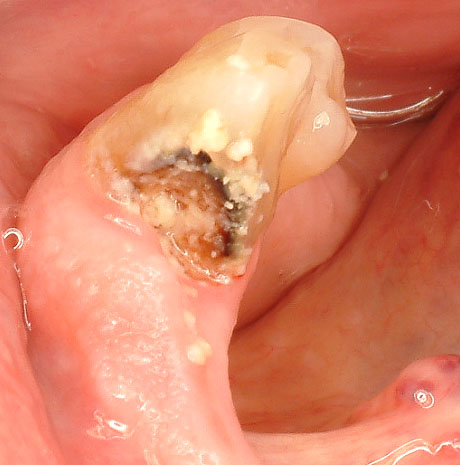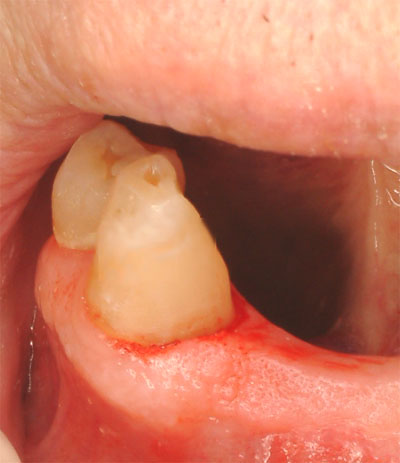Forum Replies Created
-
AuthorPosts
-
Nuno FerreiraSpectatorHi Glen,
As William Chen, DMD, MAGD descrive ‘Turtle’ technique.
Start desensitizing .25 (15/15) 30 seg., then .25 (0.0) 30 seg defocus mode.
Increase the power to 1.25 (15w/15a), then
increase to 2watts(30w/30a), gradually to caries removal setting of 2.5-3.5watts (40w/40a) .
What setting you use to use Glen?
PatricioSpectatorJerry,
Thanks for your comments. In the earlier days I was trying to find a way to cut down on the water spray in the front of the mouth and reduce the more pronounced pulsing of the laser at 4-6watts for the patients benefit and mine so I began to use 1.5w at the preset. I belive it is 11% Air and 7% water. I find I can treat well over 90% of all anterior teeth and most bicuspids at this setting. I use 30 to 45 seconds depending upon the patient I am working on and in some cases I go to 60 t0 75 seconds when I know they are squirrely. I generally aim primarily at the cervical but cover the entire facial and in the case of the bicuspid I work either facial or lingual and occlusal. I also enter the work site at 1.5 just long enough to assure myself all is well and to get an idea of what setting I want to use to prep the tooth. I probable proceed a little slower than others at the beginning so as to deepen the anesthesia before i go to the deepest area of the cavity. If I get some sensitivity I immediately go to a small round to decondition the patient and continue to remove the deep decay. This usually works fine and then it is back to the laser again working my way to the more sensitive area at a pace which seem to be within the patients tolerance.
Some patients tell me they feel something cold and some have said a little tingling but all agree this is the better way. I would say it is better to get them numb the first time once they feel more than they want it is more difficult to over come this with more numbing.
Hope this helps to explain my approach.
Pat
AnonymousKeymasterBob,
Only the 1st image uploaded. Email me the 4 and 3 jpegs and I’ll post them
Thanks
Glenn van AsSpectatorHI the Sameer , great to see you posting here again.
Yes I could have done that , veneers but the breakdown on the incisal was such that I feared making a prep design that didnt overlap the lingual. The contacts on the lingual were around 1/2 to 2/3 down the palatal surface and I was worried about the contact being right on his biting surface.
Looking back veneers were an option and I just decided in this instance to go with full coverage due to his bite.
You have a good point though. Thanks
Glenn
dkimmelSpectatorMark, Do you think you will have anything open in July?
David
2thlaserSpectatorDavid,
Absolutely. After July 1, it is usually blissful summer weather here, low humidities, great for golf, fishing, hiking, lasering. You know, the usual! We can set it up.
Just let me know.
Mark
AnonymousKeymasterJust playing with the camera this morning. Thought these pictures turned out decent.
#27 image after removing some of the debris w/ explorer

er,cr;Ysgg No anesthesia.
Started defocused 5.25W 90/75 B& L 40 seconds each.
Dropped to 2.5W 50/35 to prep outline/ enamel removal .
1.5 W 35/20 to remove decay. Did use round bur to speed things up.
.75W 11/7 for gingivectomy/troughImages prior to final cervical decay removal


Final image

Would have liked more ‘during the process’pictures but my slowness with the camera was putting me behind schedule.
Suggestions?
Would you have removed more gingiva for better access?
SwpmnSpectatorLooks good to me and there appears to be adequate access to the cervical margin after gingivectomy.
Only thing I think about is that burnt orange looking dentin rock hard? I’m always scared I might leave infected dentin.
Al
Robert GreggParticipantRon
QUOTEWould you have removed more gingiva for better access?I wouldn’t. I think what you removed was ideal. These are the kind of patients that get decay wherever tooth is exposed to the oral environment. Remove more tissue, get more recurrent decay…..
Just my thoughts.
Bob
PatricioSpectatorI like to start with a number around forty or higher and then work down to lower numbers depending upon the decay I find at the higher number and the over all patient’s decay profile. I often double check with my unit what the hygienist found and to locate for myself the exact location of the defect before I start.
Pat
greg holmSpectatorGlenn. So the matrix is in good shape after prepping with the laser. Now that would be cool and a big plus. I am usually pretty careful but you know I still end up having to polish many adjacent contacts.
Greg
greg holmSpectatorI agree. I usually don’t treat anything below a 40 unless there is a real caries problem in a pt. But, I certainly can’t think of a single tooth I have ever tx that had a reading of less than 10.
Greg
AnonymousKeymasterAl,
You’re correct the 2 images showing the gingivectomy/trough, both have decay. Just didn’t stop to take another picture after removing it-was getting too far behind schedule.
greg holmSpectatorI don’t know jack about any of this but I do know it sure sounds like I would rather be using a pen handpiece than a 90deg. Fewer parts, simpler design mean less costly maintenence problems.
Thank you all for your observations.
Greg
greg holmSpectatorNuno, thank you for the reply. I will keep it as reference. I think you are mistaking me for Glen. I wish I could answer you about technique, but honestly, I don’t have one yet!
I am, Greg Holm from Wichita, Ks., USA -
AuthorPosts
